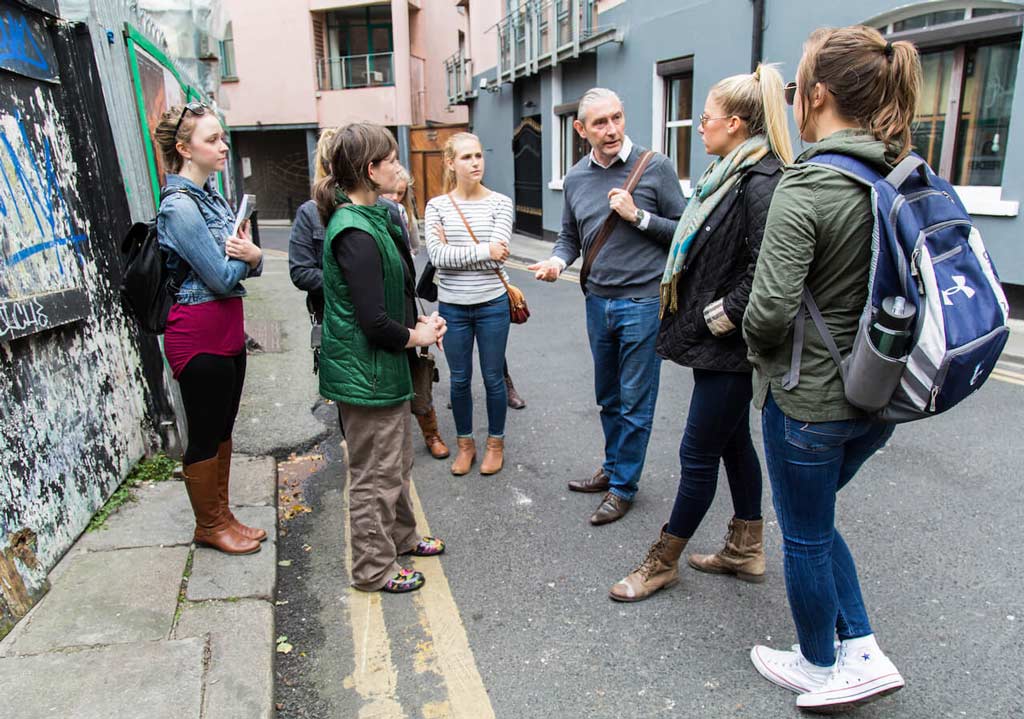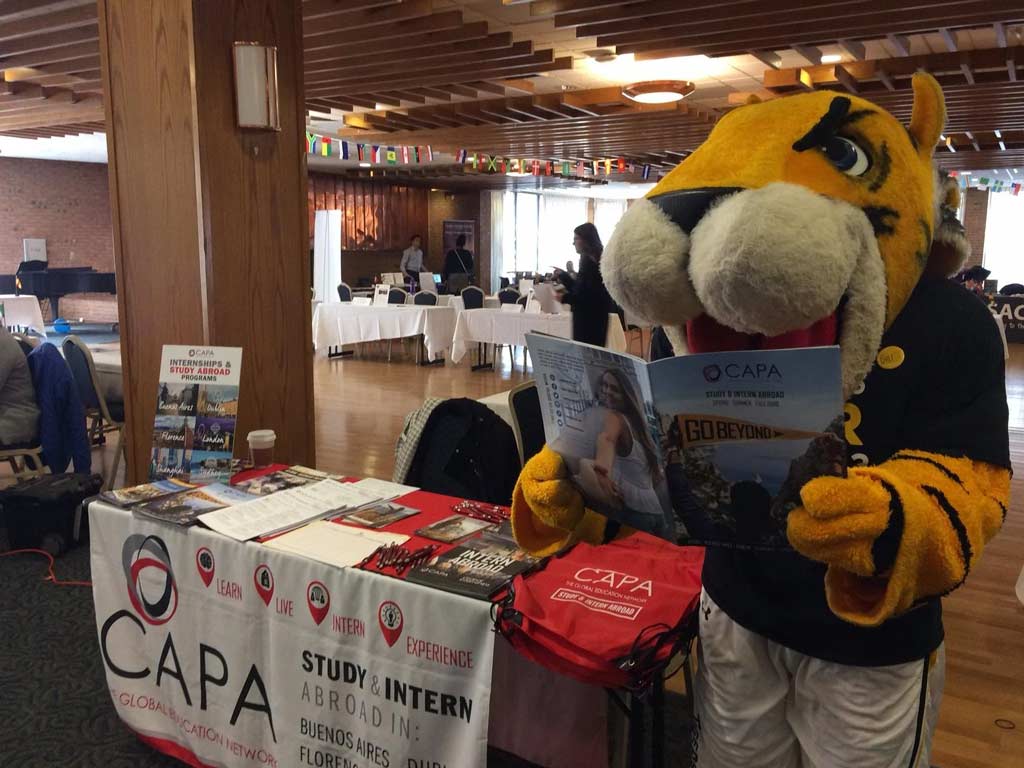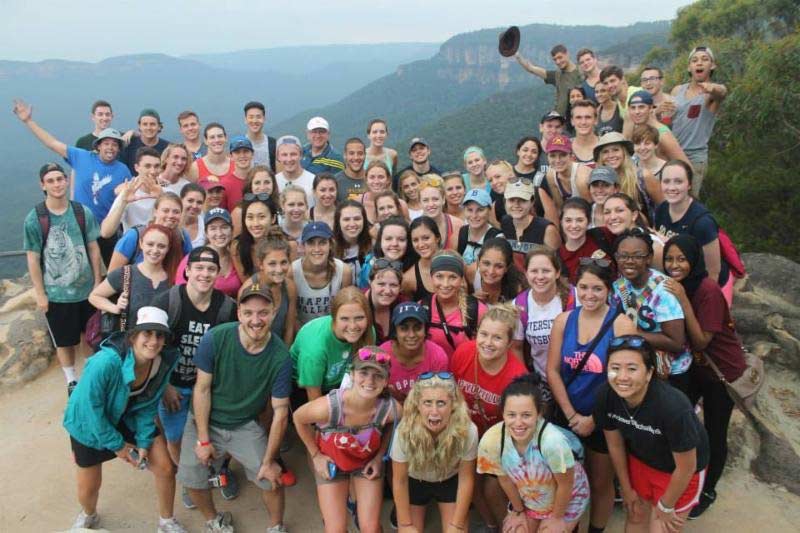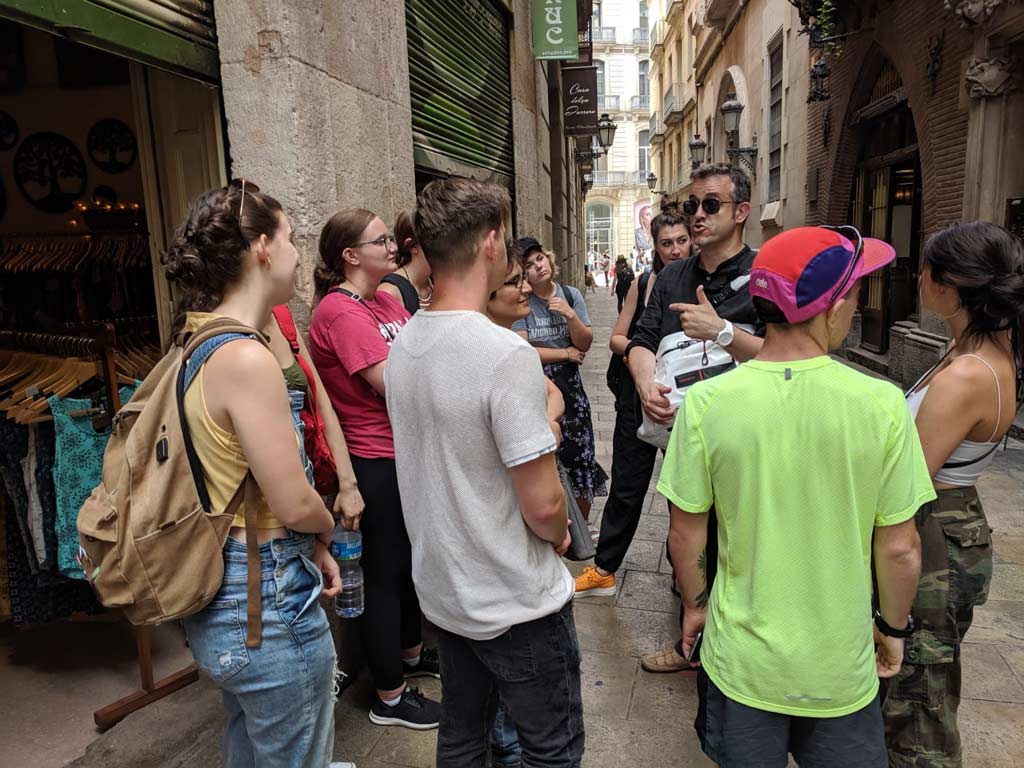Planning a faculty-led study abroad program is exciting! Along with elements like program design and approvals, it's also crucial to effectively recruit students so that you ensure your program runs successfully. Student recruitment can be the determining factor in whether your program can run at all, as there will likely be enrollment minimums that you need to meet. As the lead faculty member, you'll have a significant impact on program recruitment. This post in our Empowering Faculty series is designed to give you some tips to consider to recruit a strong student cohort for your program.
-
Consider Recruitment in the Program Design Stage
From the moment you start planning a new faculty-led program, consider student needs and interests every step of the way.
a. One of the biggest factors that affect student enrollment is the time of year that your program runs. It's important to consider all the factors that may compete with your program, from fall sports and holidays to financial aid availability. Whether you choose a two-week January program or a full semester, understanding what works for your student body is key.
b. Choose your course strategically. Keeping your course aligned with what students need to take for their major or minor, or general education requirements, will increase the value of the program to more students.
c. Consider a regular cadence. Your recruitment efforts can be ongoing and more sustainable if your program runs consistently. If the program runs every year, every other year, every term, etc., then a student who can't go this term can consider it for next time.
d. Know what the price entails. Price is a huge factor in a student's decision in determining whether they can study abroad, and there are sometimes expenses that aren't covered by the program fee, like meals or flights. Do some research on how much your program will cost beyond just the program fee. Learn what scholarships students can apply for to go on this program, or if financial aid will cover any of the program fee.
Tip: CEA CAPA can provide cost estimates for anticipated out-of-pocket expenses for your program.

Caption: A class excursion into the streets of Dublin.
-
Consider Student Motivation and the Best-fit Student for Your Program
Of all the study abroad options out there, the reason a student would choose to go on your faculty-led program (instead of a full semester abroad directly enrolling in another institution), can include:
a. Students may be more comfortable going abroad with a community they are already familiar with, which includes you as the faculty leader but also the student cohort. Getting the group together often before the program will build rapport.
b. Students might not be able to take a full semester away from their campus depending on their major requirements
c. Your program might be shorter than other study abroad options, making it an easier leap for students who have obligations at home or aren't comfortable going abroad for a significant period of time. And, because your faculty-led program is likely to be shorter, it will be therefore less expensive than full summer or semester options.
d. Transcripts can be easier because credit is given by home university.
e. Students can study a specific subject related to their major.

Caption: Students overlooking Florence during a tour of the city.
-
Start Promoting Your Program Early
a. Recruitment can start as soon as a program is confirmed, and depending on your campus, it may be beneficial to start promoting the program as far in advance as one or even two years. Campus recruiting should continue until your program has reached its enrollment cap, or until you've reached your deadline. Consider a waitlist if you're putting an enrollment cap on the program.
Tip: Think one or two terms in advance, at least. September is a good time to start talking with students about the following spring or summer programs.
-
Consider Various Promotional Events
a. Study abroad fairs are beneficial for a course that gives general elective credit or a basic requirement.
Tip: Targeted info sessions at classes may be better utilization of time if the course is higher level
b. Develop and present short, 3-5-minute classroom presentations about your program. You can tell students about the program during your own classes or visit your colleague's classes at a time that works for them.
c. Work with your study abroad office to offer informational sessions. These program overview sessions are a great way to share more details about what students should expect and how they would benefit from participating. Consider what time of day is best for students to attend an info session at a time when all students aren't in class, like lunch or dinnertime. Info sessions can be virtual, on Zoom or a similar platform, or in-person on campus.
Tip: In-person events tend to be better attended, and classroom presentations at large lecture halls can reach the widest audience with a low investment of time.
d. Work with your campus student union or study abroad office to have an information table in the student union or a similar popular part of campus during key recruiting times.

Caption: Study abroad fairs provide a great opportunity to recruit students for your program!
-
Utilize Campus Resources
a. The study abroad office on your campus can support with connecting you with the other resources below. Study abroad offices often help with marketing, study abroad fairs, tabling, etc.
b. Academic advisors may be a great resource to share information about your course so that they can recommend it to students that would qualify or be interested in the subject matter as part of academic planning. Make sure they know some highlights and benefits gained through your program, so they can encourage students to apply.
c. Ask other faculty in your discipline if they would be willing to promote your program amongst their students.
d. Peer-to-peer marketing: Students who have gone abroad on your program, or a similar program with you previously, are great resources to help spread the word about your program to give prospective students the "˜inside scoop' about how the program went. Or, if your program is new, there may be a student on campus who has studied abroad at the same location as your program who may be willing to help galvanize excitement.
Tip: As part of CEA CAPA's alumni empowerment plan, a CEA CAPA alum from your school may be able to be a student ambassador on campus. See your CEA CAPA Institutional Relations Manager for more information.
e. Newsletters and Campus Bulletin Boards: Work with your department and/or your study abroad office to get your program featured in appropriate campus newsletters and print or electronic billboards.
f. International Education Week, which occurs each November, is a great time to spread awareness. Contact your study abroad office to see what events may be happening around campus.

Caption: Students who've studied abroad previously in your program's location can be great peer-to-peer marketers!
-
Write a Clear, Concise, and Exciting Program Description
a. You may have already written up a description of your program to obtain institutional approvals, but writing a program description to get students excited to study abroad requires a different tone. Your program description should be simple and explain the goals of the course with an appropriate title to grab interest right away. Focus on not just what the program involves, but what students will take away from the program. Use photos and videos so that students can visualize themselves on the program.
Tip: CEA CAPA can provide messaging and student photos of our locations if you need!
-
Stay Connected
a. Once you get applications - recruitment isn't over! Check in regularly with your students who have started applications often to see if they have any questions and maintain excitement and preparedness for the program. Keep track of students who have expressed interest in your program and keep them on a newsletter list to email them periodically with updates regarding info sessions, meetings, deadlines, or fun facts about your program and location.
b. Make sure you're aware of your institution's deadlines, including the last possible date to add students to your program and any relevant payment timelines, including deposits or withdrawal fees.

Caption: Students on a faculty-led class trip through Barcelona's Gothic Quarter.
-
Utilize CEA CAPA Marketing Resources
a. CEA CAPA can provide you with a variety of customized assets and materials including photos, flyers, and social media kits, to promote your program, plus the CEA CAPA marketing team can meet with you directly to discuss marketing your program. Talk to your Institutional Relations Manager to learn more about how CEA CAPA can help.
Bottom Line: Why do students want to go on your program? The most common reasons that students choose a program is through word of mouth, program location, the term it's running in, whether the course can help to fulfill graduation requirements, and the reputation of the faculty member who is leading or teaching the course. Try to use these as the main highlights in all marketing and recruitment strategies.
Speak with an institutional relations manager to discuss more strategies on how to market and recruit your CEA CAPA Custom Faculty-Led Program!







